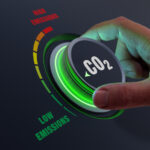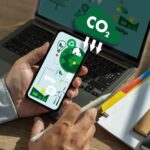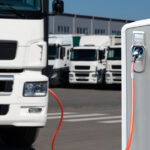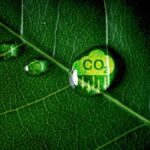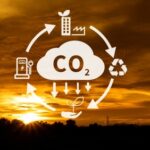With the holidays behind us and the work of a new year well underway, the Office of Energy Efficiency and Renewable Energy (EERE) can look back with pride on the remarkable achievements of 2022. Huge funding allocations, breakthrough innovations, and new, paradigm-shifting legislation made the second year of the Biden-Harris administration a memorable chapter in the history of the clean energy transition. Each of EERE’s core divisions—renewable power, energy efficiency, and sustainable transportation—can boast of multiple noteworthy accomplishments.
In addition to its investments in cutting-edge energy technologies, EERE made a concerted effort to refine and modernize its funding processes. All EERE funding opportunity announcements now require applicants to describe how a given project will support equity, diversity, and workforce development. We launched the Clean Energy Coalitions Prize to foster the development of community-level partnerships among organizations seeking to address local energy challenges—awarding the first round of 10 Prizes this month. Our Energy Transitions Initiative Partnership Project, which helps local leaders, residents, and organizations take charge of the clean-energy transition in their community, selected its second cohort of 12 remote and island communities that will benefit from EERE support. EERE is also focused on increasing the diversity of its own staff: for the first time, EERE placed recruiting booths at four minority-serving conferences. In 2023, EERE will have recruiting booths at seven such conferences.
Renewable Power
2022 featured several important advancements in the field of geothermal energy. In July, DOE announced an investment of up to $165 million in domestic geothermal development. This funding will allow researchers to leverage technology and expertise from the oil and gas industry to help solve the unique challenges of widespread geothermal energy generation and improve our ability to capture the energy potential of the earth’s natural heat. Two months later, DOE launched the Enhanced Geothermal Shot™, a special initiative to reduce the cost of enhanced geothermal systems by 90% (to $45 per megawatt-hour) by 2035.
Throughout the sunny months, DOE celebrated “Summer Solar Savings,” a campaign to raise awareness of solar energy’s role in reducing electricity prices for American families. As part of the campaign, DOE launched several new programs designed to build an equitable clean energy workforce, overcome challenges to solar adoption for low- and moderate-income households, and expand participation in community solar programs.
To support the Biden Administration’s goal to deploy 30 gigawatts of offshore wind energy by 2030, DOE released a domestic offshore wind workforce assessment, a roadmap for a fully domestic offshore wind supply chain, a new prize competition to stimulate domestic manufacturing for floating offshore wind, and new funding to both improve offshore wind transmission technologies and enhance our understanding of the impact of offshore wind development on affected communities. In September, DOE launched its second Energy Earthshot of 2022: the Floating Offshore Wind Shot. This interagency initiative seeks to reduce the cost of floating offshore wind energy by at least 70% (to $45 per megawatt-hour) by 2035, which would create opportunities for the widespread deployment of wind farms in deep waters far from shore.
DOE’s Water Power Technologies Office (WPTO) launched the Hydropower Operations Optimization (H2Os) Prize in April and announced the winners of the third and final phase of the prize in January 2023. The H2Os Prize challenged innovators to employ modeling, mathematical optimization, data science, and machine learning to create new ways for hydropower systems to coordinate with the grid to meet our water-management needs. Then, in July, WPTO celebrated a technological milestone when CalWave Power Technologies, Inc., completed California’s first at-sea, long-duration wave energy project. The company’s “xWave” wave energy pilot device, which CalWave developed with DOE funding, survived two extreme storms, required no interventions, and remained operational for 99% of its deployment off the coast of San Diego.
As the adoption of renewable energy continues to accelerate, DOE has expanded its efforts to help communities navigate the clean energy transition on a local level. In November, DOE invested $43 million in a series of research projects that will provide selected communities with the resources and technical expertise they need to develop plans for renewable energy integration, grid modernization, and protective measures for extreme weather. In January, EERE worked with DOE’s Office of Electricity and Grid Deployment Office to launch the Grid Solutions Program, which works with state energy offices, regulators, utilities, ISO/RTOs, and other stakeholders to jointly develop, pilot, and disseminate potential solutions to emerging grid challenges. The program is currently working with partners in multiple regions to address integrated energy system planning, resource adequacy, and electricity market issues.
Energy Efficiency
DOE’s Industrial Decarbonization Roadmap lays out a comprehensive strategy for the reduction of industrial emissions in American manufacturing. Released in September alongside a $104 million funding opportunity for industrial decarbonization technologies, the roadmap will inform the federal government’s efforts to reduce carbon pollution through measures such as industrial electrification, innovations in energy efficiency, low-carbon fuels, and carbon-capture technologies.
Soon after the release of the roadmap, DOE launched its Industrial Heat Shot initiative, the third and final Energy Earthshot of 2022. The Industrial Heat Shot will support the objectives established in the roadmap by accelerating the development of technologies that can slash greenhouse gas emissions from industrial heating processes by 85%.
In tandem with its efforts to improve the efficiency of American manufacturing, DOE made several breakthrough advancements in building efficiency. In keeping with the Biden-Harris administration’s commitment to modernize American building codes and efficiency standards, DOE announced stronger efficiency standards for light bulbs, established a fixed timetable for the reduction of carbon emissions from new and existing federal facilities and issued new rules that will improve the efficiency of distribution transformers, home furnaces, clothes dryers, mobile homes, and more. All told, the Biden-Harris administration took more than 110 actions throughout 2022 to strengthen energy efficiency standards, measures that will save the average family at least $100 annually through lower energy bills in the years to come.
Sustainable Transportation
Since last fall, DOE’s Hydrogen and Fuel Cell Technologies Office (HFTO) has responded to key hydrogen provisions in the Bipartisan Infrastructure Law (BIL). First, HFTO published the draft DOE National Clean Hydrogen Strategy and Roadmap, which details how clean hydrogen could achieve a 10% reduction in economy-wide greenhouse gas emissions by 2050. The same day, Secretary Granholm announced a historic, $7 billion funding opportunity—developed jointly by HFTO and DOE’s Office of Clean Energy Demonstrations—for Regional Clean Hydrogen Hubs, which will create networks of producers, consumers, and local infrastructure. Then, in December, HFTO announced $750 million in funding for research, development, and demonstration efforts to dramatically reduce the cost of clean hydrogen and support the long-term viability of the Hydrogen Hubs.
One year after the launch of the Sustainable Aviation Fuel Grand Challenge, DOE published a comprehensive “flight plan” for the mass domestic production of sustainable aviation fuels (SAF). The SAF Grand Challenge Roadmap is the result of extensive collaboration between DOE, the U.S. Department of Agriculture, the Environmental Protection Agency, the Federal Aviation Administration, and other agencies. The roadmap will help guide the technological innovation required to make the United States a leader in the emerging global SAF market. In recognition of its hard work, the team responsible for developing the roadmap received the Secretary of Energy Achievement Award.
Finally, DOE awarded $2.8 billion in funding to 20 companies that will work to expand domestic manufacturing of batteries for electric vehicles, along with important materials and components currently imported from other countries. This massive investment will support the domestic extraction and processing of lithium, graphite, and other battery materials, in addition to a range of manufacturing and supply chain initiatives. After accounting for matching contributions from funding recipients, this investment amounts to more than $9 billion in new funding for America’s growing electric vehicle industry.
The infusion of new funding promises to accelerate the ongoing decline in the cost of electric-vehicle batteries. DOE’s Vehicle Technologies Office estimates the cost of an electric vehicle lithium-ion battery pack fell by 89% between 2008 and 2022 due to improvements in battery technologies and chemistries and an increase in manufacturing volume.
This column appeared originally on the Office of Energy Efficiency & Renewable Energy’s website.

The Office of Energy Efficiency & Renewable Energy (EERE)’s mission is to create and sustain American leadership in the transition to a global clean energy economy. Its vision is a strong and prosperous America powered by clean, affordable, and secure energy. EERE aims to achieve strategic goals including:
- Accelerate the development and adoption of sustainable transportation technologies.
- Increase the generation of electric power from renewable sources.
- Improve the energy efficiency of our homes, buildings, and industries.
- Stimulate the growth of a thriving domestic clean energy manufacturing industry.
- Enable the integration of clean energy into a reliable, resilient, and efficient electricity grid.
- Lead efforts to improve federal sustainability and implementation of clean energy solutions.
- Enable a high-performing, results-driven culture through effective management approaches and processes.
NULL
